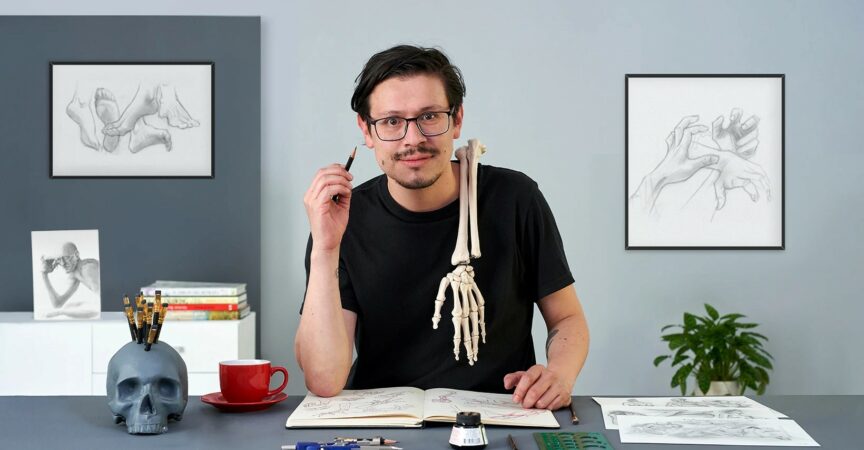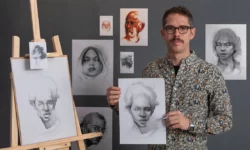Anatomical Drawing of Limbs, Hands and Feet (Spanish, Eng sub)
Release date:2020
Duration:02 h 41 m
Author:ZURSOIF Miguel Bustos Gómez
Skill level:Beginner
Language:Spanish
Exercise files:Not Provided
Learn how to draw intricate anatomical illustrations of bones, joints, and muscles and build your portfolio. While hands and feet have been illustrated extensively throughout history, achieving accuracy requires a thorough understanding of their shapes and mechanics. Gain this knowledge and more from Colombian illustrator Miguel Bustos Gómez, known as Zursoif, who has worked with various publishers, including Rey Naranjo, Ediciones Vestigio, and Editorial Planeta.
Zursoif’s previous courses, Figure Drawing for Beginners and Figure Drawing: The Human Head, have helped students improve their art skills. Now, learn to draw both hands and feet and the major limb bones, joints, and muscles. Develop a keen eye for their forms and movements and hone your ability to draw them from memory or reference models.
![[Domestika] Anatomical Drawing of Limbs, Hands and Feet](https://online-courses.club/wp-content/uploads/2023/02/Domestika-Anatomical-Drawing-of-Limbs-Hands-and-Feet.jpg)
Explore the fundamentals of anatomical drawing, including templates for stenciling and references for sketching. Start with basic shapes like cylinders and spheres before moving on to the bones of the torso and spine.
Master drawing the anatomical parts of the limbs, from the shoulder and arm to the fingers and from the hip to the feet. Learn about the muscles and ligaments facilitating movement and discover techniques for adding texture to your drawings. Remember to study the structure of the bones too!
Collect your best work to create an impressive anatomical portfolio, incorporating various perspectives to showcase your skills. With this course, you’ll have the knowledge and expertise to create stunning human anatomy illustrations, with or without a reference model.
Prior drawing experience is not required to enroll in this course. You only need to have some basic drawing tools, including paper, graphite pencils, colored pens, a technical pen with a fine tip, tracing paper, rulers, and a compass.





 Channel
Channel





